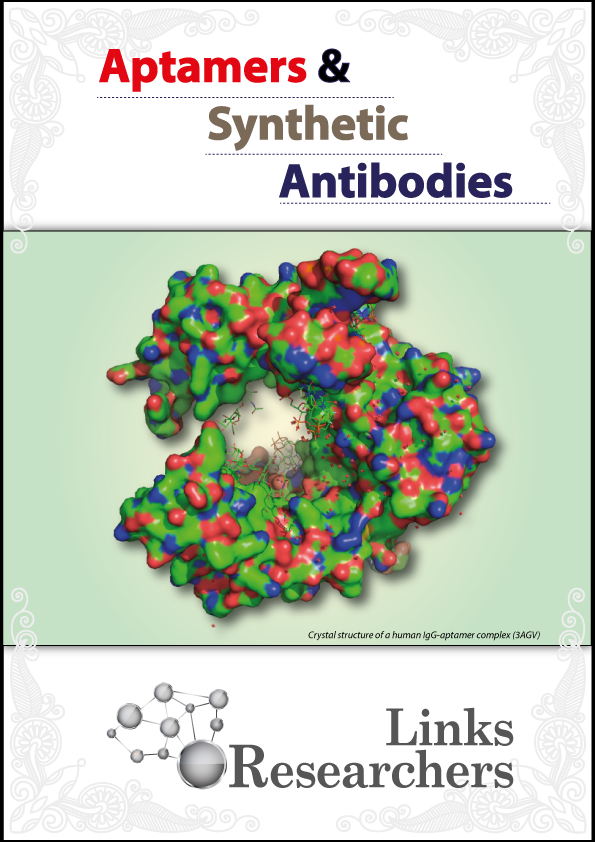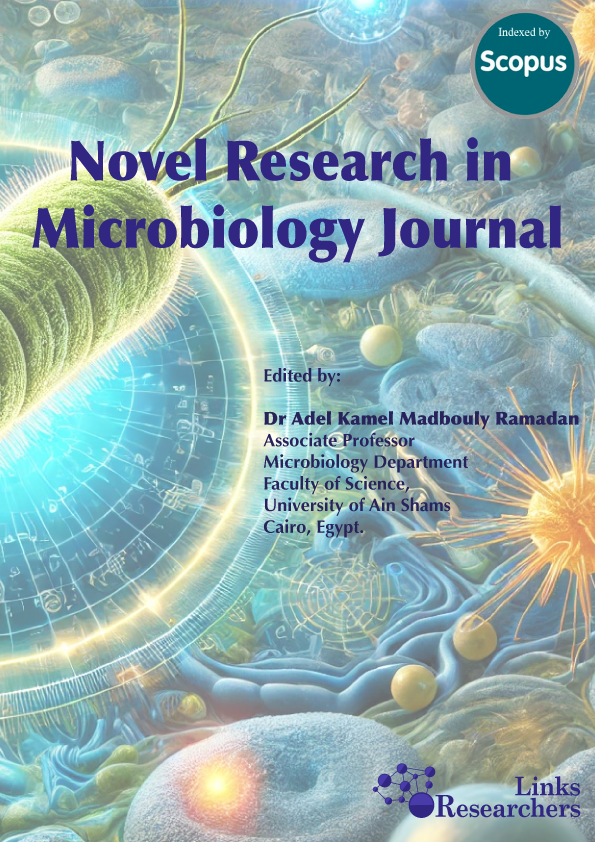Temitope Oluwasegun Cephas Faleye1, Johnson Adekunle Adeniji1, 2 *
Haq Aman Ullah1*, Aneela Zameer Durrani2, Muhammad Ijaz2 and Aqeel Javeed3
Atul Sharma, Aruna Chandra Singh, Gautam Bacher, Sunil Bhand
A. Sajeena and T. Marimuthu
D.K. Hazra, Megha Pant, S.K. Raza and P. K. Patanjali
Hassnain Shah, Hina Riaz, Nadeem Akmal , Muhammad Sharif* and Abdul Majid**
Abid Hussain*, Imdad Hussain Mirza and Muhammad Azeem Khan**
Imran Khan1, Zahir Shah2, Wiqar Ahmad3*, Farmanullah Khan2 and Muhammad Sharif2
Asim Khan1, Shahid Ali1*, Syed Attaullah Shah1, Aftab Khan1 and Raza Ullah2
Muhammad Sohail Memon1*, Khadim Ullah1, Altaf Ali Siyal1,2, Naimatullah Leghari1, Ahmed Ali Tagar1, Khalil Ahmed Ibupoto1, Syed Tahir Ata-ul-karim3, Muhammad Tahir4 and Noreena Memon1
Iqbal Javed1, Abdur Rehman2*, Farhana Khaliq1, Amar Razzaq3, Mudassar Yasin4, Ghulam Mustafa5, Allah Bakhsh6 and Raheel Saqib7
Zeeshan Al Hameed1, Junaid Saleem2*, Syed Sajid Hussain1, Ahsan Abdul Ghani2, Hira Lal2
study, we report, for the first time in Pakistan, that the indigenous Fluorspar can directly be used as a metallurgical
flux without any beneficiation process as it is rich in Fluorite and also contains small amount of other compounds
that are required to be fed as part of slag. Specifically, it contains only trace amount of apatite as compared to
glo...
Nisar Mohammad٭, Mohammad Mansoor Khan٭, Noor Mohammad٭
Muhammad Farooq1*, Elham Azadfar2, Zohre Bahrami3, Mahniya Sharifi3, A. Shakoor4, Shabir Ahmed5, Iftikhar Ahmed Solangi1, Muhammad Noman Khan6, Memona Siddique7, Naila Ilyas8*, Muhammad Bakhtiar9, Mohamed El-Fatieh Ismael1 and Wang Yunyang1
Ramadan, F. Abbas1;H.M.Salem1; M.H. Belal2, and A. M. M. Abd-Alla3*
Ljupco Angelovski*, Zagorka Popova, Katerina Blagoevska, Sandra Mojsova, Marija Ratkova Manovska, Mirko Prodanov, Dean Jankuloski, Pavle Sekulovski
Fahrauk Faramayuda1,2*, Totik Sri Mariani3, Elfahmi1,4 and Sukrasno1
Jong Ho Ahn1, Jang Hoon Choi1,2 and In Sik Nam1,3,*
Sadarman1, Agung Irawan2, Muhammad Ridla3, Anuraga Jayanegara3*, Nahrowi3, Roni Ridwan4, Ahmad Sofyan5, Hendra Herdian5, I Nyoman Guna Darma5, Teguh Wahyono6, Dewi Febrina1, Rakhmad Perkasa Harahap7, Rizki Amalia Nurfitriani8, Danung Nur Adli9
Seon-Ho Kim1, Mahfuzul Islam1,2, A-Rang Son1, Sang-Suk Lee1*
Jarmuji Jarmuji1,3, Lili Warly2*, Mardiati Zain2, Khasrad Khasrad2
Wafaa M.A. Ghoneem, Reham R. El-Tanany and Adel E.M. Mahmoud*
Shumaila Nazir1, Iqbal Javed1, Muhammad Luqman2* and Azra3
Muhammad Hanif Khan1, Syed Muhammad Suhail2, Hayaz uddin1, Aitbar Khan3, Rashid Ahmed Magsi3, Rajwali Khan2*, Iftikhar Ahmed2, Asim Ijaz2 and Khalid Khan2
Mariam Arain1, Asghar Ali Kamboh1* and Muhammad Javed Arshed2
El-Kholy KH1*, Tag El-Din H1, Seham NE Seleem1, Eman Hussein2 AM El-Shhat2
Md. Enayet Kabir1, Md. Jahangir Alam1*, Md. Mosharaf Hossain2, Zannatul Ferdaushi3
I Gusti Lanang Oka Cakra1*, Anak Agung Ngurah Badung Sarmuda Dinata2, I Gede Mahardika1, I Gusti Nyoman Gde Bidura1
Abd El-Moniem Ali S. Mahgoub, Ahmed Mohamed Abd El-Hafeez, Mahmoud Yassin Mohamed*, Al-Moataz Bellah Mahfouz Shaarawy, Mohamed Ibrahim Nassar
Yasmin M. M. Mahmoud*
Ngoc Tan Nguyen1*, Minh Thanh Tram1, Thi Thu Pham1, Tan Loi Le1, Thi Khanh Ly Nguyen1, Tuan Thanh Hoang2, Cong Thieu Pham3, Nguyen Khang Duong4
Mostafa El-Sebelgy1*, Hanafy Madbouly2, Sabry Tamam2, Nagwa Ata1, Kawther Zaher1
Lin Li1,2, Pingsheng Ye1, Xi Chen1, Shuping Yan1 and Yuanshu Zhang1*
Hakan Kececi1*, Yasin Ozturk2, M. Bahaeddin Dortbudak3, Seda Yakut4, Gurdal Dagoglu5 and Merve Ozturk1
Desy Cahya Widianingrum1*, Himmatul Khasanah1, Melinda Erdya Krismaputri1, Susan Barbara Patricia Sembiring Meliala2
Nuraini Nuraini*, Yuliaty Shafan Nur, Ade Djulardi, Robi Amizar, Yesi Chwenta Sari
Nuraini Nuraini*, Yuliaty Shafan Nur, Ade Djulardi, Robi Amizar, Yesi Chwenta Sari
Keywords | Medium fermentation, Natura, Tenebrio molitor larvae, Nutrient content, Broiler performance
...Sherif Abdelghany1, Hossam Mahrous Ebeid2*, Ahmed Abdelkader Aboamer2, Mohamed Ali Radwan1, Rania Agamy1
Kamel Etman Ibrahim Etman*, Salah Kamal Sayed, Farouk Amin El-Sayed, Abd-Alghany Hasaneen Ghoniem, Mostafa Mohamed El-Nahrawy, Mona Ahmed Alsayed Farag
Khalid Farooq, Muhammad Tahir and Nazir Ahmad Khan*
R. Singh1† and R. Z. Sayyed2
O. A. Fabiyi
Muhammad Iqbal Anjum*, Shahbaz Javaid, Agha Waqar Yunus, Faisal Ashfaq and Javed Iqbal
Ronny A.V. Tuturoong1*, Sony A. E. Moningkey1 and Nova L.I.M. Ogi2
Roni Pazla1, Novirman Jamarun1*, Elihasridas1, Arief1, Gusri Yanti2, Zaitul Ikhlas2
Subramaniyam Suresh, Saravanakumar Marimuthu*, Prashanth D’Souza
Arief1, Roni Pazla2*, Rizqan1, Novirman Jamarun2
Ovirup Bhushan Paul1, Shodipta Sharma Urmi2, Md. Ashraf Ali Biswas3*
Riswandi1*, Ali Aim1, Muhakka1, Afnur Imsya1, Agus Wijaya2
Nguyen Thi Kim Dong1*, Nguyen Van Thu2
Roy Malindo1, Anuraga Jayanegara2, Osfar Sjofjan3, Siti Chuzaemi3*
Sigit Bintara1*, Riyan Nugroho Aji1, Panjono2, Ali Agus3
Fadzlin Afiqah A. Samad2, Amirul Faiz Mohd Azmi1, Muhamad Affan Ab Azid1, Hafizin Mu’izz Zalazilah1, Syakirah Zulkifli1, Izreen Edriana Mohd Jasmi1, Muhammad Baqir Irfani Rahimin Affandi1, Mohd Zamri Saad1, Md Zuki Abu Bakar1, Agung Irawan3,7, Adib Norma Respati4, Anuraga Jayanegara5,7, Sadarman Sadarman6,7, Hasliza Abu Hassim1,2,7*.
Roy Malindo1, Hosea Abdiel Duto Wicaksono2, Maskur2, Anuraga Jayanegara3, Osfar Sjofjan4, Siti Chuzaemi4*
Rizki Palupi*, Arfan Abrar, Fitri Nova Liya Lubis, Yuni Kurniati, Bianca Ikriza Octa Nadia Putri
Amirul Faiz Mohd Azmi1,4, Hafandi Ahmad1, Norhariani Mohd Nor1, Goh Yong Meng1, Mohd Zamri Saad2, Md Zuki Abu Bakar1, Norafizah Abdul Rahman5,6, Agung Irawan7,9, Anuraga Jayanegara8,9, Hasliza Abu Hassim1,3,9*
Novirman Jamarun1, Roni Pazla1*, Arief2, Elihasridas1, Gusri Yanti3, Rani Winardi Wulan Sari4, Zaitul Ikhlas4
Mudawamah Mudawamah1*, Sumartono Sumartono1, G. Ciptadi2, E. Susanto3, Y. Hartoyo4, L. Affandhy5,6
Amistu KU1,2*, Monahan FJ2, Wims P2, Yonatan KY1 , Fahey AG2, Takele TA3
Shaker B. Al Suwaiegh
Arief1*, Roni Pazla2
Nur Saptahidhayat1, Claude Mona Airin1, Yanuartono1, Dyah Ayu Widiasih1, Soedarmanto Indarjulianto1*, Sri Handayani Irianingsih2, Meta Iqomah3
Tevina Edwin, Arfa’i*, Olivio Dickresna
Nguyen Huu Van1*, Nguyen Thi Mui1, Dinh Van Dung1, Van Ngoc Phong1, Tran Ngoc Long1, Le Tran Hoan1, Le Duc Thao1, Vo Thi Minh Tam1, Ngo Mau Dung1, Bui Van Loi1, Nguyen Xuan Ba1, Ton Nu Minh Thi2, Nishino Naoki2
Azzami, Mohamed 1.; Hakiml , Aya Salah El-Din; Othman2, Badawi A. and 2 El-Dougoug, Khaled A.
Karl Maramorosch
Ahmed Abd El Samie Hassan Ali
Anak Agung Ayu Sri Trisnadewi*, I Gusti Lanang Oka Cakra
Ram Prasad Ghimire
Mathew O. Ayoola1*, Kayode Sasona1, Oluwakamisi F Akinmoladun2, Tolulope O. Faniyi3, Abel O. Oguntunji1, Tunde E. Lawal1
Limbang Kustiawan Nuswantara, Eko Pangestu, Marry Christiyanto, Santoso Dwi Pratomo, Elyza Zahrotul Muhtaromah
Zahid I. Mohammed
Putri Okta Shafura1, Mardiati Zain2*, Elihasridas2, Bima Bagaskara1, Ummi Amanah1, Laras Sukma Sucitra1, Bella Veliana Utami1, Roni Pazla2, Erpomen2, Ezi Masdia Putri3, Rusmana Wijaya Setia Ningrat2, Riris Delima Purba3, Ruslan Abdul Gopar3, Putut Suryo Negoro3
Ping Sheng Ye1, Lin Li2, Yu Long Wu3 and Yuan Shu Zhang1*
Umair Ahmad1*, Asad Sultan1, Sarzamin Khan1 and Muhammad Tahir2
Nittaya Thongtip1, Sukanya Poolthajit1, Sirikhan Thartrak1, Qiongxian Yan2, Suntorn Wittayakun1*
Suparada Saphaphan, K. Teepalak Rangubhet, Phongthorn Kongmun*
Basheer Ahmad, Nowsherwan Zarif, Saif Ullah Khan, Salman Ahmad and Anwar Ali*
Danh Mo
Hong Chen1,2, Jiawei Liu1,2, Chuan Lin1,2, Hao Lv1,2, Jiyun Zhang1,2, Xiaodong Jia1,2, Qinghua Gao1,2 and Chunmei Han1,2*
Lei Chu1, Jie Yang2, Zhenshi Chen2, Xiajun Zhang1, Weidong Wu3*, Shaoru Zhang2 and Lihui Wang2*
Yue Guo1,2*, Hai Yan Dong1, Hong Chang Zhou1,2, Hui Zhang1 and Ming Ke Lu3
Gautam Kumar Deb1*, Md Faizul Hossain Miraz1, SM Jahangir Hossain1, Shahrina Akter1, Md. Ahsanul Kabir1, Md Ruhul Amin2, Md Panir Choudhury1, Nure Hasni Desha1
Mahfuza Ferdous1, Sabuj Kanti Nath1 and Mustasim Famous2*
Elly Roza, Yulia Yellita, Hilda Susanty, Rizqan
Catur Suci Purwati1, Chusnul Hanim2*, Lies Mira Yusiati2, Budi Prasetyo Widyobroto3
Syeda Rubab Zaidi* and Safdar Ali Mirza
Iqtidar Hussain1*, Mohammad Safdar Baloch, Ejaz Ahmad Khan and Asghar Ali Khan
Renny Fatmyah Utamy1*, Ambo Ako1, Hasbi Hasbi1, Zyahrul Ramadan2, Andi Arif Rahman Hakim2,3, Siti Annisa Sukri2
Yusuf Subagyo*, Merryafinola Ifani, Hermawan Setyo Widodo
Ali Bain*, Musriah, La Ode Nafiu, La Ode Muh. Munadi, La Ode Muhsafaat, Nur Santy Asminaya, Astriana Napirah, Widhi Kurniawan, Fuji Astuty Auza, Deki Zulkarnain
Md Kamrul Hasan1,2, Hong-Seok Mun1,3, Keiven Mark Bigtasin Ampode1,4, Eddiemar Baguio Lagua1,5, Hae-Rang Park1,5, Young-Hwa Kim6, Md Sharifuzzaman1,7, Chul-Ju Yang1,5*
Nuttanun Leamkrajang, Somkiert Prasanpanich, K. Teepalak Rangubhet, Phongthorn Kongmun*
Muhammad Noman Tariq1, Saeed Ahmed*1, Ghazanfar Ali Chishti1, Muhammad Shahbaz Zafar1, Muhammad Saadullah2, Muhammad Usman1, Mohsin Ali1 and Ghulam Qadir1
Saima Bibi* and Nazir Ahmad
Muhammad Abdul Basit1, Lionel Kinkpe1,3*, Abdur Rahman1, Boko Michel Orounladji2, Hafiz Qadeer Ahmed3, Muhammad Subbayyal Akram4, Elodie Dimon5, Gadah Albasher6, Syed Muhammad Suhail1
Abdul Razak1, Imran Altaf1*, Aftab Ahmad Anjum1, Ali Raza Awan2 and Farhat Nazir Awan3
Khakim R. Tukhtaev1, Adolat U. Mirzaeva2*, Firuza D. Akramova2, Orifjon Khamidov3, Ruziboy K. Shapaotov2, Javokhir R. Esonboev2, Shoira O. Saidova2, Angela Monica Ionică5*, Kakali Bhadra4
Kazi Abdus Sobur1*, Shabuj Kumar Pal2, Md. Abdur Rahim3 and Palash Bose1
David C. Nwobodo1,5*; Chibueze P. Ihekwereme2; Chinedu J. Ikem3,5; Festus B.C. Okoye4
I. N. T. Ariana1*, G. A. M. Kristina Dewi2, N. L. P. Sriyani1, I. N. S. Miwada3, T. I. A. S. Ardani4
Dan Liao1, Mingchao Li2, Zijun Xiong3, Qiuming Ji4, Ying Xia5, Bing Liu6 and Xiu Gui1*



















